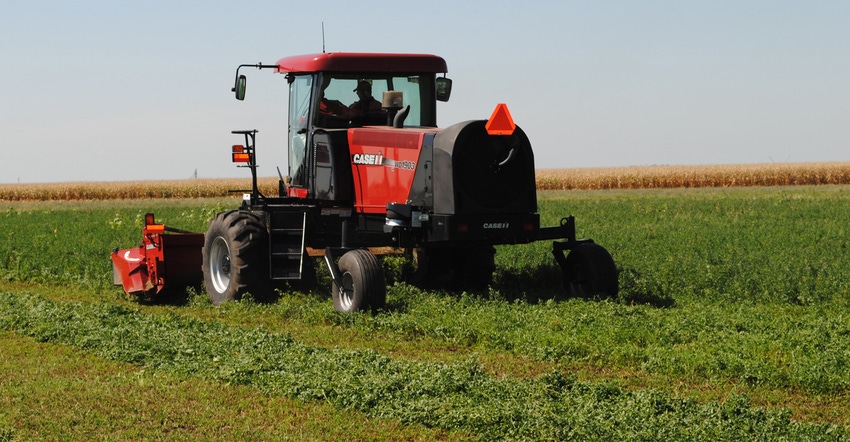September 18, 2018

How do you decide when one alfalfa field has run out of steam and a new one needs to be planted? Here are some things to look for.
One obvious answer is when the stand gets too thin, but what is too thin? One guideline uses the density of alfalfa shoots and plants. Older, dryland fields should have 25 or more shoots coming from two or more plants per square foot to be worth saving. Irrigated fields need 40 shoots from three or more plants. If your stand is thinner than these guidelines, look for somewhere to start a new field next spring.
Also look at weed density. Are your fields getting weedier each year? Are many of the problems perennial plants like bluegrass, dock or dandelions? If so, your alfalfa stand may lack the vigor or density needed to compete. A new field should be considered.
Alfalfa stands can last a long time, but just because a stand is thick and weeds aren’t a problem doesn’t mean you should keep the field another year.
This is especially true for many older dryland fields. Once dryland fields exhaust all available subsoil moisture, yields drop even though stands may remain thick. In these fields, yield is limited to only what annual rainfall can support. Many dryland fields reach this stage after four or five years. Rotating to a new field can provide a fresh source of deep subsoil moisture.
Also, remember that the crop following alfalfa in that field will get some free nitrogen as well as a rotation-based yield boost. Rotating alfalfa through your fields just a little more frequently will give them a boost more often.
Anderson is a Nebraska Extension forage specialist. This report comes from UNL CropWatch.
About the Author(s)
You May Also Like




